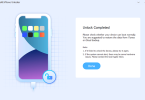Learners’ academic outcomes were always limited by the resources available within the classroom. But this is no longer true in modern society, as technological breakthroughs have revealed new ways for students to learn. Today’s technology can transform not only learning itself but can also boost the relationship between teachers and learners and reinvent brand-new methods for collaboration, adapting learning based on students’ needs. Professions that didn’t require the use of technology in the past now rely heavily on it. Many ed-tech companies have started to incorporate disruptive tech tools into traditional academic subject teaching to create well-minded adaptive learners. But the focus is also on developing critical thinking, enhancing collaboration, and boosting problem-solving skills.
Moreover, learners also get the opportunity to become more autonomous in their learning and gradually learn that they can be great if they put in the hard work. During the COVID-19 pandemic, many schools and universities had to operate remotely, which fuelled technology adoption. Many Ed-tech firms are investing in technologies like VR and AR, AI and machine learning to respond to the dynamic educational landscape. Considering these aspects, it only makes sense for students to use technology to boost their learning capacities. Here is how to do so.

Contents
Online courses
As long as they have a solid internet connection, students can learn anything they want by taking courses online, such as web development or computer coding. Traditional classroom learning doesn’t meet the needs of students because it loses sight of one crucial aspect, namely that learners are all different, and thus, they have different abilities. This is where technology comes to help by allowing students to learn at their own pace. Online resources can compensate significantly for the lack of customized learning in the classroom. When taking online courses, you can play a video lecture as many times as you want until you grasp the information, which is highly beneficial to those facing complexities in learning. Technology provides learning opportunities even for students with autism or ADHD, enabling them to score good grades. Learners can improve their performance significantly through an online course. For instance, if you struggle with understanding complicated chemistry topics, you can search for a chemistry tutor online who will help you be more confident and do better at tests.
Digital books
Digital books are meant to meet every student’s needs, whether a beginner or an expert. Novice learners who don’t have much understanding can get to an intermediate level by acquiring more skills and knowledge. With smart search engines and cloud storage, finding information is much easier than searching for reference material in a reading room. Technology provides access to a load of digital data that is just one click away. Plus, digital textbooks are less costly than paper textbooks, meaning that underprivileged students can access them too. Interested learners can store them on their devices, incorporating many ideas.
Educational apps
Students can use apps like graphing calculators and language learning for a continuous learning experience. To this end, they can leverage different resources, such as assignments, live classes, quizzes and revision worksheets, and gamification of learning through educational games. This way, students can learn on the go and productively use their devices, thus boosting their academic performance. In the first quarter of 2020, there were over 450 million downloads of educational apps from the App Store. This number shows that students benefit considerably from learning apps that encourage immersive learning experiences. These apps provide practical digital content and are designed to enhance learners’ abilities, as they are based on high engagement. The best part is that they meet every student’s requirements, thus creating exciting opportunities for them. And many of these apps provide free learning.
Time tracking tools
Time management skills play a significant role in students’ academic performance. Those who manage their time efficiently often see better results in school. Besides, this skill can also help you in your personal life. By leveraging time-tracking tools, students can get an accurate insight into their studying patterns and figure out how consistent they are. Plus, time-tracking tools enable learners to establish short-term goals and track their academic progress effectively. They can also meet deadlines more effectively and use their time wisely during examinations. Time tracking decreases the pressure you feel when an exam gets closer, helping students organize their studies productively. But the benefits don’t here, as this tool can also help improve planning, identify distractions, and beat procrastination.
Augmented and virtual reality
Virtual and augmented reality make immersive learning literal, providing students with a realistic scenario of what they study. These tools are excellent because they encourage curiosity in students while also breaking the monotony of textbook learning. AR and VR are reliable, especially for practical concepts like engineering, science and architecture. AI alters reality through sound or images, while VR creates a simulated environment, creating a whole new dimension to a particular concept. Through VR, a biology student can better understand the intricate elements of the human brain, which leads to a better academic outcome.
Collaboration tools
Collaboration is vital in learning, helping students share perspectives about a specific topic. Modern learning technologies have enhanced learning by replacing teacher-centered education with collaborative learning tools. This shift creates more meaningful experiences for students, making the educational process more adventurous. Effective collaboration allows learners to learn from each other and add to their knowledge consistently. Video conferencing, Zoom, and Slack are fantastic tools that help students collaborate promptly.
Similarly, these tools boost teacher-student communication, allowing them to add comments or share important information. Not only collaboration improves academic success, but it is also an imperative skill that can benefit students on a personal level. And as you probably already know, in modern times, collaboration is mainly done virtually, and its prevalence will likely get bigger over the years. Hence, learning how to leverage technology for collaborative learning can help students immensely in their lives.
More from us: 7 Proven Mobile App Development Best Practices You Need to Know
Last words
Technology is making learning better and easier, enabling learners’ access to high-quality educational resources. Moreover, it helps them grasp academic concepts efficiently and, thus, perform better.






